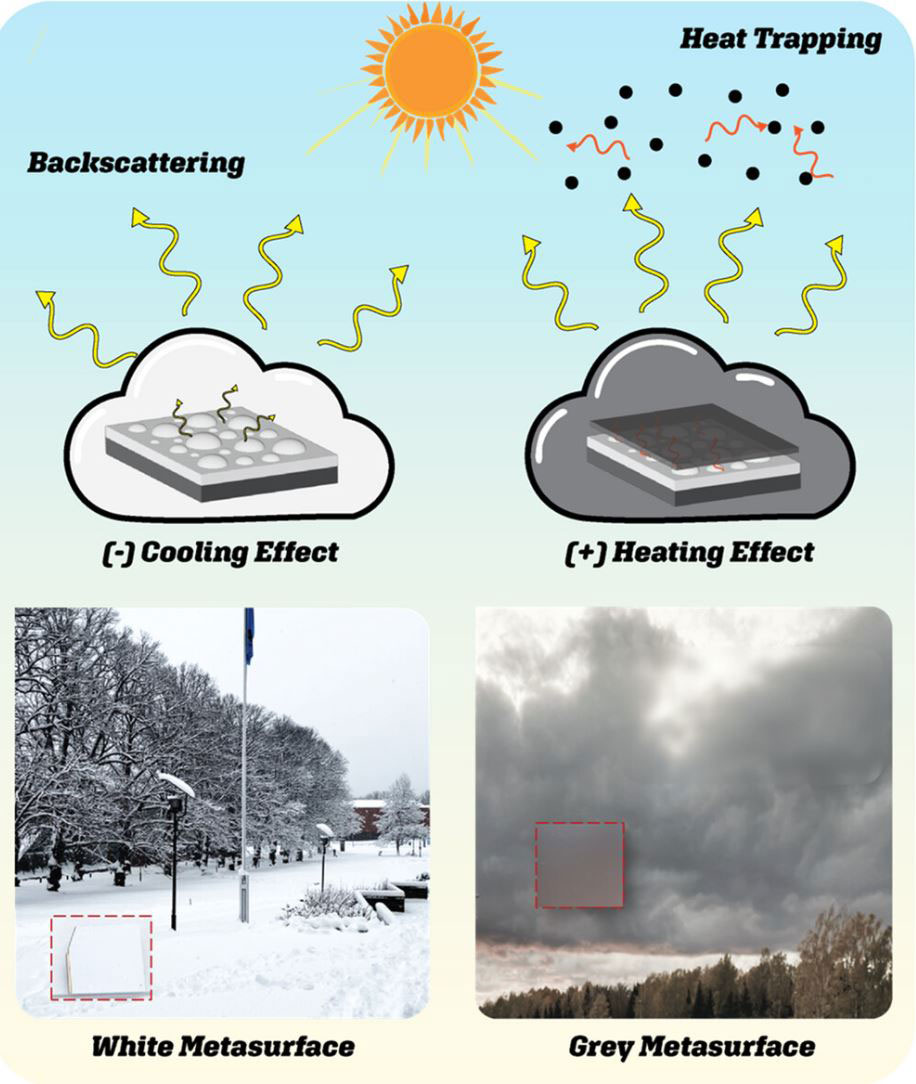[Image: Stockbyte/ Getty Images]
Scientists in Finland and Germany have developed a new kind of nanostructure that mimics the scattering and absorptive properties of clouds to either cool or heat objects exposed to sunlight (Adv. Mater., doi: 10.1002/adma.202501080). They say that the structure’s low emissions at infrared wavelengths make it well suited to military and materials applications requiring invisibility to thermal imaging.
Passive cooling
Objects can be passively cooled by shielding them from solar radiation and insulating them from their environment while enhancing emission at infrared wavelengths, allowing heat to be transferred from the objects to the cold of outer space. However, this infrared emission renders such objects susceptible to thermal imaging. (White paints, which scatter light diffusely across all wavelengths, also emit significant thermal radiation.)
An alternative approach to passive cooling is to exploit the thermal physics of white clouds. These clouds cool air via backscattering—scattering incoming sunlight back in the direction it came from. Because they do so across a broad range of visible and infrared wavelengths, the clouds avoid heating up and emitting thermal radiation. Conversely, when clouds are located underneath a layer of aerosols, their backscattered light is absorbed by the particles, turning the clouds gray and heating the air around them.
In the latest work, Mady Elbahri, Aalto University, Finland, and colleagues have taken inspiration from these processes to develop plasmonic metasurfaces that can modify both the optical and thermal properties of materials exposed to the sun’s rays. Their idea was to tailor the characteristics of silver nanoparticles lying on a substrate so that they backscatter light across visible and near-infrared wavelengths.
 [Enlarge image]
[Enlarge image]
Researchers have built a new type of metasurface that mimics the cooling and heating effects of clouds while remaining thermally camouflaged. [Image: Mady Elbahri / Aalto University]
Mimicking clouds
The researchers fabricated a metasurface to mimic a white cloud by first depositing a very thin film of silver onto a layer of silicon and then carrying out vacuum annealing at 650ºC for 50 minutes. After producing a certain size and distribution of silver islands atop the silicon, they deposited a thicker (120-nm-thick) layer of silver on top of that. This upper reflecting layer not only made the surface more stable, it also converted what would otherwise have been forward-scattered light into back-scattered light.
Elbahri and colleagues found that they could control the size of the silver nanoparticles by varying the thickness of the initial film. Thicker films yielded bigger and more varied particles, which pushed backscattering to longer wavelengths. With 50-nm-thick films, the team achieved backscattering across much of the visible and near-infrared spectrum, preventing heat from building up and so minimizing emissions in the infrared.
To reproduce the effects of a gray cloud, the scientists then deposited a plasmonic nanocomposite—an aluminium oxide matrix containing randomly distributed copper nanoparticles acting like aerosols—on top of the existing metasurface. This extra layer absorbed almost all of the light backscattered by the silver, changing the device’s original white color to gray.
To confirm that their metasurface switched from mimicking white to gray clouds, the researchers placed the device on a block of foam, exposed it to simulated sunlight and measured its temperature with a thermocouple. They found that without the nanocomposite, their metasurface reduced the temperature of the underlying substrate by 10ºC. With the additional layer added, in contrast, the metasurface increased the relative temperature by 10ºC—even surpassing the absorptive capacity of black surfaces.
Toward energy efficiency and beyond
Elbahri and colleagues argue that their technology could be exploited in adaptive coatings for energy efficiency in buildings, solar systems and textiles, as well as for military thermal camouflage. Having already fabricated different samples to demonstrate the mimicking of white and gray clouds, they say their next step is to build a device that can switch between the two states using, for example, electrochromic or phase-changing layers.
They add that while the scattering efficiency of the white sample dropped slightly after remaining in storage, that of the gray sample remained almost unchanged; demonstrating, they say, “the metasurfaces’ practical stability for consumer applications.”
